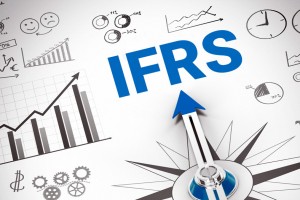Event Details
- Apply the requirements of the standards to prepare IFRS compliant financial statements, including the determination of appropriate accounting policies and identification of necessary disclosures
- Define the process of transitioning to IFRS and identify the first-time adoption exemptions and exceptions relevant to an organization
- Explain how the recognition and measurement principles of the IASB’s Framework apply within each accounting standard
- List the standards that require or permit the use of fair value measurement, identify how fair value is measured and specify where the fair value changes are recognized
- Apply the new standards on revenue, leases and financial instruments
CONTENT
Introduction to IFRSs
-
- Brief history of IFRSs
- Conceptual Framework
- Fair value measurement (IFRS 13)
Content of IFRS Financial Statements
-
- Presentation of financial statements (IAS 1)
- Statement of cash flows (IAS 7)
- Accounting policies, changes in accounting estimates and errors (IAS 8)
- Discontinued operations (IFRS 5)
- Events after the reporting period (IAS 10)
- Operating segments (IFRS 8)
- Related party disclosures (IAS 24)
- Interim financial reporting (IAS 34)
Assets
-
- Inventories (IAS 2)
- Property, plant & equipment (IAS 16)
- Borrowing costs (IAS 23)
- Intangible assets (IAS 38)
- Investment property (IAS 40)
- Impairment of assets (IAS 36)
Liabilities
-
- Leases (IFRS 16)
- Employee benefits (IAS 19)
- Provisions, contingent liabilities and contingent assets (IAS 37)
- Share-based payment (IFRS 2)
Financial Instruments
-
- Financial assets and liabilities, hedging and derivatives (IAS 32, IAS 39, IFRS 9)
- Financial instrument disclosures (IFRS 7)
Income Taxes
-
- Income taxes (IAS 12)
Revenue
-
- Revenue from Contracts with Customers (IFRS 15)
Foreign Currency Issues
-
- The effects of changes in foreign exchange rates (IAS 21)
Business Combinations, Consolidations, Associates and Joint Arrangements
-
- Business combinations (IFRS 3)
- Consolidated financial statements (IFRS 10)
- Separate financial statements (IAS 27)
- Investments in associates and joint ventures (IAS 28)
- Joint arrangements (IFRS 11)
- Disclosure of interests in other entities (IFRS 12)
Transitioning to IFRSs
-
- First-time adoption of IFRSs (IFRS 1)
Expected Future Developments
-
- IASB Work Plan
FOR WHOM:
Accountants, Controllers, Managers of Fixed Assets, Divisional and Plant Managers and all Executives involved in Fixed Asset Accounting and Administration.
TRAINING METHODOLOGY
The training methodology combines lectures, discussions, group exercises and illustrations. Participants will gain both theoretical and practical knowledge of the topics. The emphasis is on the practical application of the topics and as a result participant will go back to the workplace with both the ability and the confidence to apply the techniques learned to their duties.
This course is available in the following locations:
Nigeria - $6000
Rwanda - $7000
UK - $8000
USA - $8000





